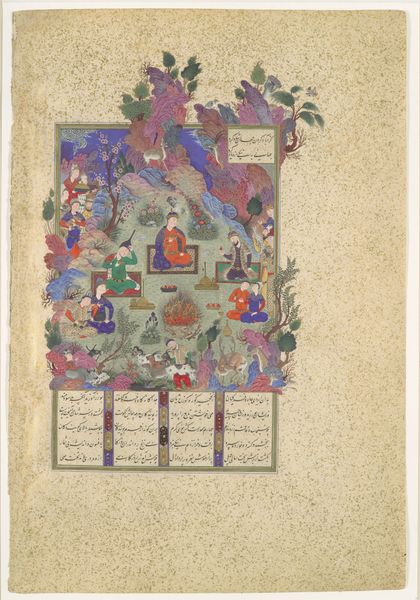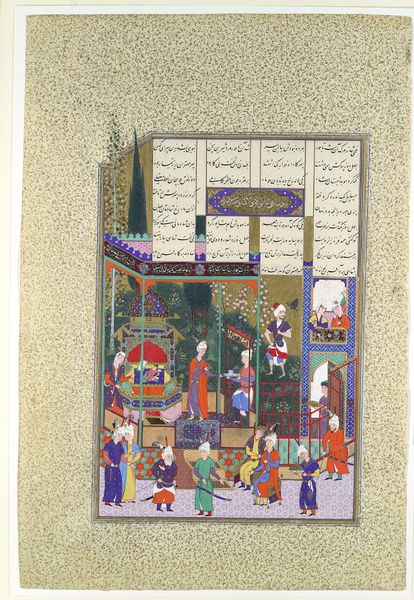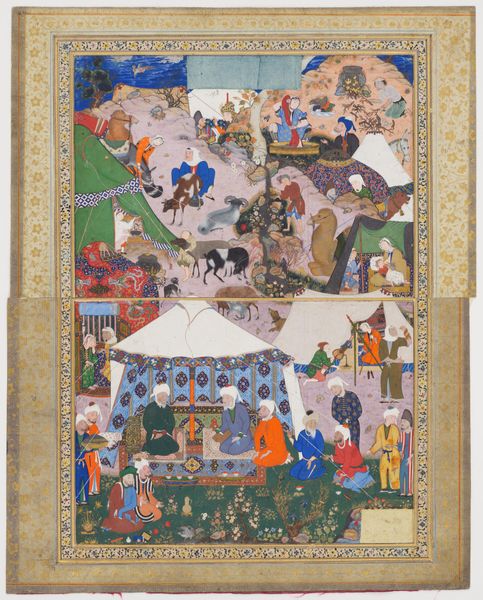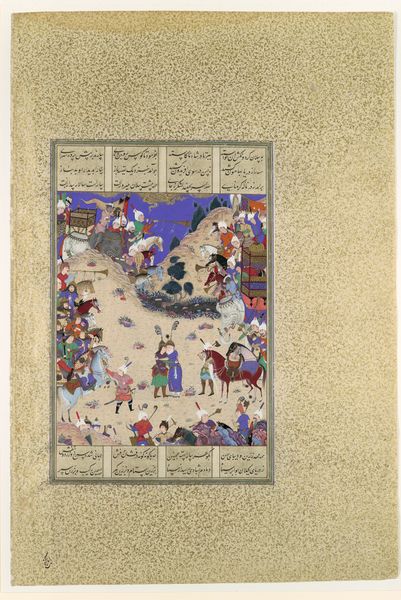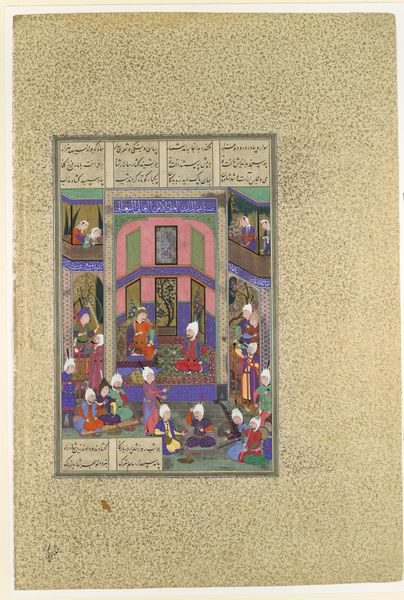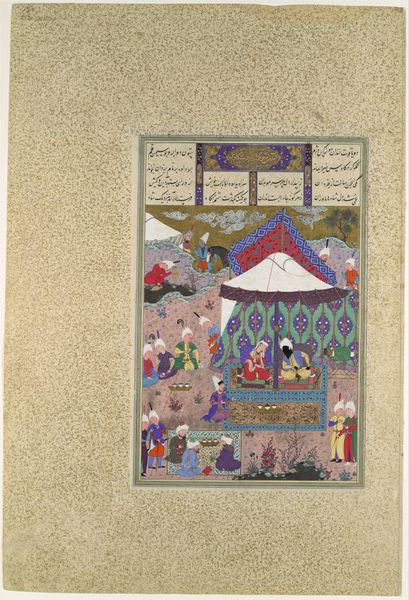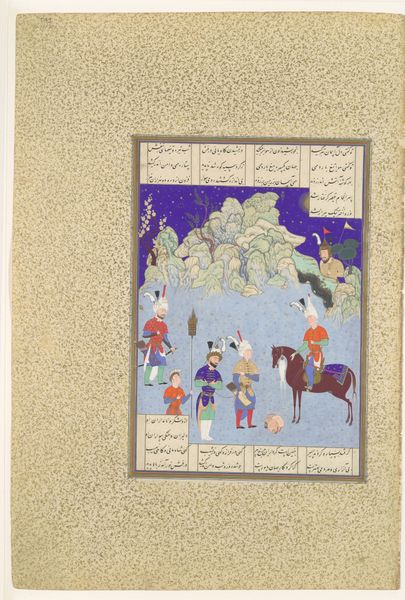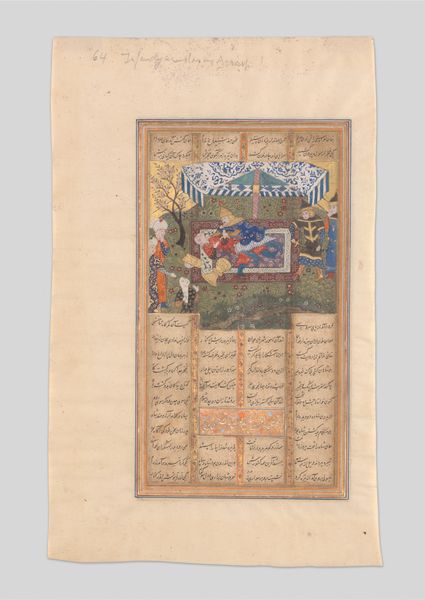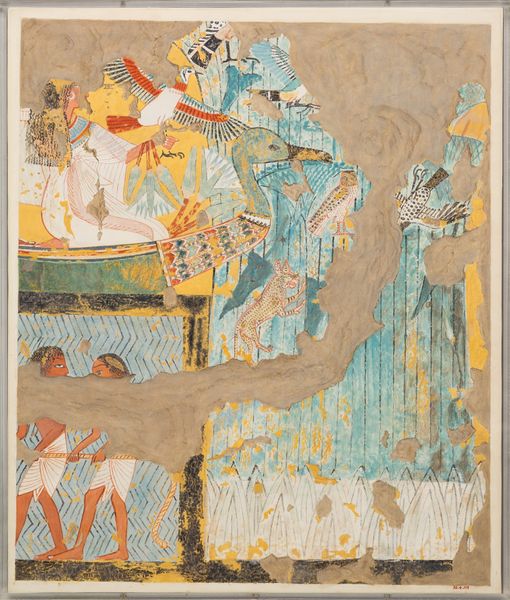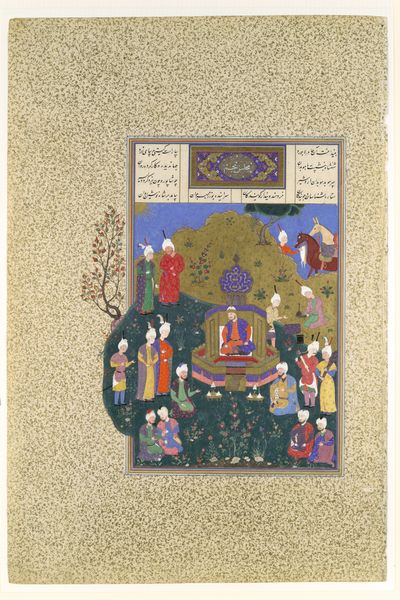
"Firdausi's Parable of the Ship of Shi'ism", Folio 18v from the Shahnama (Book of Kings) of Shah Tahmasp 1505 - 1560
0:00
0:00
painting, watercolor
#
boat
#
narrative-art
#
painting
#
watercolor
#
men
#
islamic-art
#
watercolour illustration
#
miniature
#
watercolor
Dimensions: Painting: H. 12 1/2 in. (31.7 cm) W. 8 15/16 in. (22.7 cm) Page: H. 18 1/2 in. (47 cm) W.12 1/2 in. (31.8 cm) Mat: H. 22 in. (55.9 cm) W. 16 in. (40.6 cm)
Copyright: Public Domain
Editor: Here we have "Firdausi's Parable of the Ship of Shi'ism," a watercolor from the Shahnama made sometime between 1505 and 1560. I'm really struck by the intensity of the colors, the blues and reds especially. What does this miniature tell you? Curator: It speaks volumes about the cultural and political landscape of the Safavid dynasty. The Shahnama, or Book of Kings, was a powerful tool for legitimizing their rule. Commissioning lavishly illustrated copies, like this one, connected them to a glorious Persian past, particularly significant given their Shi'a identity in a largely Sunni world. Editor: So, the visual representation was more than just decorative? Curator: Absolutely! Consider the Shi'ism parable itself, visualized through this ship allegory. The image becomes a political statement, a visual argument for the divinely ordained leadership of the Safavids. This imagery helped disseminate their political and religious ideology. The scale of production indicates their ambition of power. Who had access to it? Editor: So, by connecting their lineage to figures of authority, they reinforced their political position. I guess this helped solidify their legitimacy amongst the people? Curator: Precisely. And think about the patronage network this piece represents – the artists, calligraphers, and the royal court, all intertwined in this political project. That’s what I mean by looking at the public role and politics of imagery. Editor: It's amazing how a single image can reveal so much about power dynamics and cultural identity. Now I'm seeing beyond just the beautiful colors. Curator: Indeed! Understanding the socio-political context transforms how we view art. Now you also see beyond the mere aesthetic features.
Comments
No comments
Be the first to comment and join the conversation on the ultimate creative platform.
